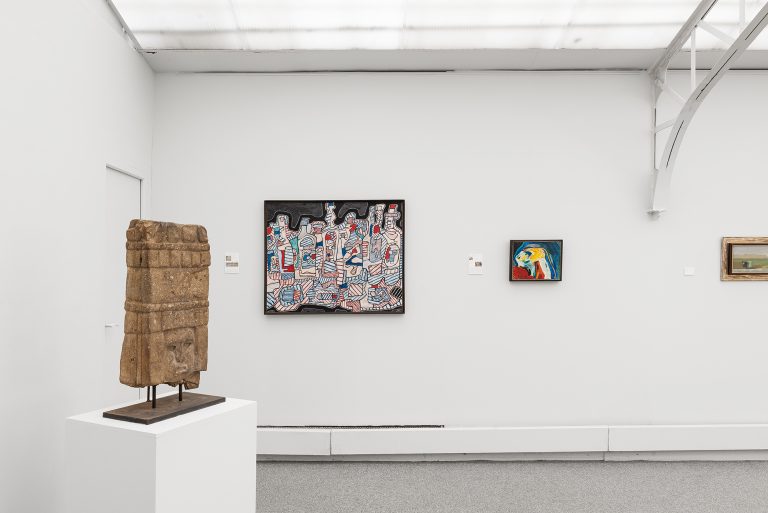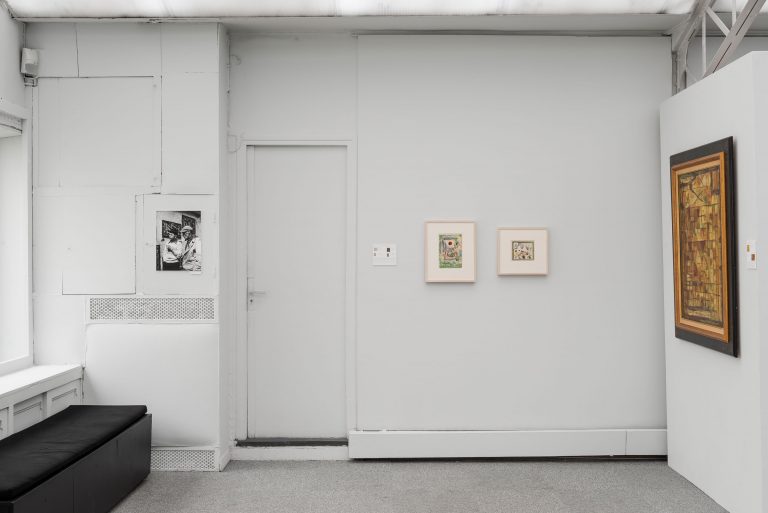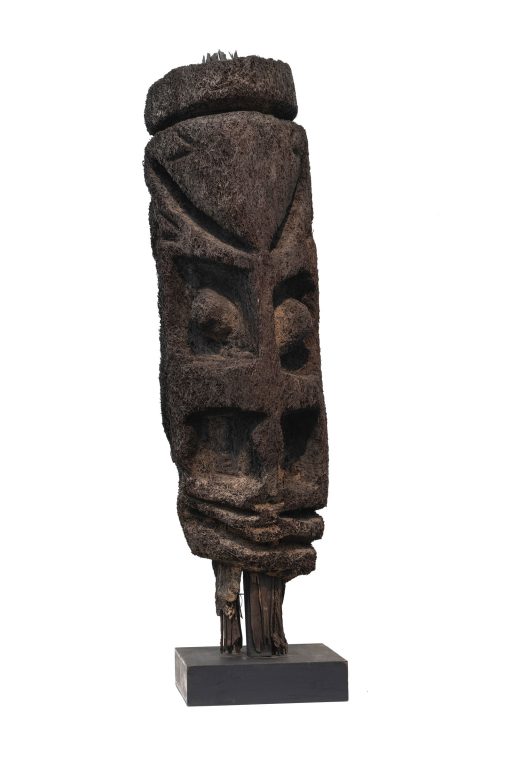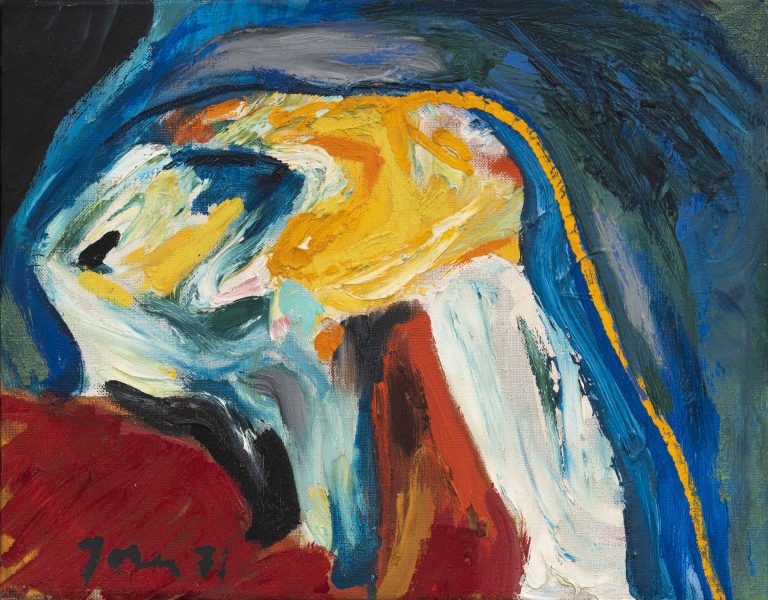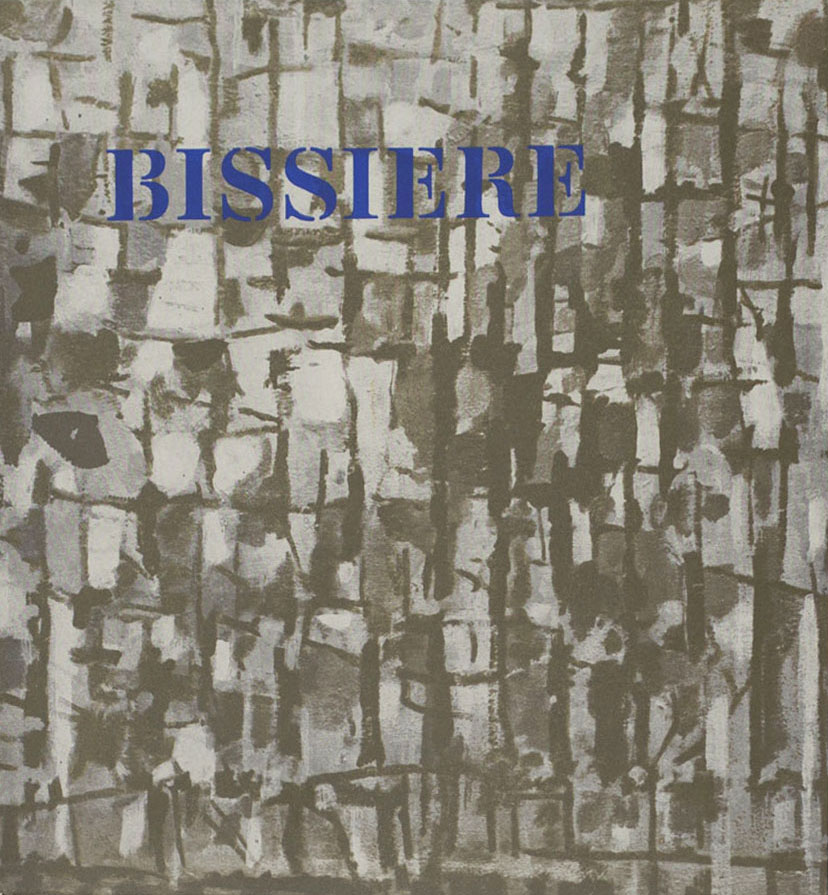23.05.2019 — 20.07.2019
Compagnons de Route
Roger Bissière, Youla Chapoval, Jean Dubuffet, Louis-Auguste Déchelette, Asger Jorn, Vera Pagava, Primitive Arts, Hans Reichel, Nicolas de Staël, Árpád Szenes, Mark Tobey, Maria Helena Vieira da Silva
St Germain Space
Past
Jeanne Bucher Jaeger — St Germain Space
Photograph by Grégory Copitet
Jeanne Bucher Jaeger — St Germain Space
Photograph by Grégory Copitet
Jeanne Bucher Jaeger — St Germain Space
Photograph by Grégory Copitet
Jeanne Bucher Jaeger — St Germain Space
Photograph by Grégory Copitet
Jeanne Bucher Jaeger — St Germain Space
Photograph by Grégory Copitet
Jeanne Bucher Jaeger — St Germain Space
Photograph by Grégory Copitet
Jeanne Bucher Jaeger — St Germain Space
Photograph by Grégory Copitet
Jeanne Bucher Jaeger — St Germain Space
Photograph by Grégory Copitet
Jeanne Bucher Jaeger — St Germain Space
Photograph by Grégory Copitet
Jeanne Bucher Jaeger — St Germain Space
Photograph by Grégory Copitet
Jeanne Bucher Jaeger — St Germain Space
Photograph by Grégory Copitet
Beginning on May 22, the Centre Pompidou will pay tribute to several major modern and contemporary art dealers in France from 1905 to the end of the 1960s. In dialogue with this exhibition, in which one room is devoted to Jeanne Bucher, founder of the gallery, the gallery presents its latest exhibition, “Compagnons de Route”, so dear to Jean-François Jaeger. Jaeger took over the gallery in 1947 following Jeanne Bucher’s death in 1946, and tirelessly supported his “Companions” for over 60 years.
In the Spring of 2000, Jean-François Jaeger paid tribute to these artists with an exhibition entitled Dialogue avec des Compagnons de Route, that gathered works by Giacometti, Dubuffet, Tobey, Vieira da Silva, Rebeyrolle, di Suvero, Staël, Jorn, and Bissière.
Almost 20 years later, in dialogue with the room dedicated to Jeanne Bucher at the Centre Pompidou, in which works bought by the Centre from the gallery are on display, Véronique Jaeger, general manager, and her brother Emmanuel Jaeger, gallery manager, chose to organize an exhibition for their father Jean-François Jaeger, in the very place that fueled his passion, so as to give him alively, vivid voice, intimately connected to the artists he knew, supported, and above all, loved. Compagnons de Route does not aim at showing works from all the artists he promoted and championed throughout his career, but, in a kind of prolongation of the Centre Pompidou room, focuses on artists whose works have been purchased by the Centre Pompidou from the gallery through the 1960s. The works exhibited will echo those exhibited at the Centre Pompidou.
In 2000, Jean-François Jaeger, in the preamble of the catalogue of his exhibition Dialogue avec des Compagnons de route, wrote the following:
For us, there are only beginnings, successive births every time our points of view are called into question – each of them held with total conviction, yet each potentially contradicted by another type of experience, without losing the essential attachment to the quality of the means of expression. Devoid of any creative power, we stand at the forefront, we are the first to undergo the shock when facing a revelation born in an artist’s studio, and to assimilate it so as to play our role as intermediary. Inventing an iconography adapted to the spirit of the works, orchestrating energies assembled under a subtle light to offer an efficient way to reach them, here is the only domain reserved for our pleasure. Dealing with the paintings and the sculptures all on our own allows us to savor the style of their creators in detail. The way they are laid out on the wall, distances, height, volume in space, all offer occasions to establish dialogues, most often dialogues of tenderness and respect. (…) Several exhibitions are inscribed in our memory as unforgettable events, if I do say so myself.
After Youla Chapoval (1919-1951) took 2nd prize in the Prix de la jeune peinture in May 1947, the Jeanne Bucher Gallery organized his first solo exhibition in November of the same year. It was one of the very first hangings done by Jean-François Jaeger, great-nephew of the gallery’s founder. It also led to the first acquisition of an abstract painting by Georges Pompidou. The gallery devoted a retrospective exhibition to Chapoval in 2019. The Nature morte au citron (1948) exhibited at the Centre Pompidou, acquired by the state in 1948, is an example. The gallery has chosen to exhibit the work Jeux de Lumière from the same year, as well as a charcoal drawing of 1947.
Louis-Auguste Déchelette (1894-1964), born in the region of Lyon, was a plasterer and house painter; he toured France as an apprentice between ages 16 and 31. Drawing from a very young age, he painted allegories, mostly on social and political subject matters, resorting to marvelous puns and vivid humor. Jeanne Bucher twice exhibited his clandestine, so-called “resistant” paintings during the war. In them, he denounced Fascism and Nazism and, more generally, social conflicts and the horror they bring about. Jean-François Jaeger also exhibited his work several times between 1947 and 1960. Déchelette was supported by Georges-Henri Rivière, and the State acquired some ten of his paintings between 1943 and 1965. A Déchelette-Bauchant exhibition was recently organized for the opening of the gallery’s branch in Lisbon. The Centre Pompidou owns the work L’Église St-Etienne-du-Mont, bought in 1949, which is echoed by the works Nonchalantant from 1943, painted in the midst of the resistance against Nazism in Paris.
Vera Pagava (1907-1988) came to painting through a path both demanding and tranquil in its spiritual dimension. Her work grew through a process of eliminating all extraneous elements, eventually conserving only that what concerns light. Arriving in Paris from her birthplace of Georgia in 1934, she studied with Bissière at the Académie Ranson and met Vieira da Silva, with whom she became very good friends. Her figurative still lives and her abstract landscapes remain, throughout the years, unified by a common thread in which silence, space and light reign. Their formal austerity forces the paintings to uphold their demand for truth. Jeanne Bucher initially exhibited Pagava’s works with those of Dora Maar in 1944; Jean-François Jaeger followed suit. A retrospective entitled Corps célestes was dedicated to the artist in 2017 jointly with the Galerie Le Minautore. (Curator: Mathieu Poirier). The work exhibited at the Centre Pompidou, Nocturne realized before 1951 was acquired by the state from the gallery in 1951, and is set in dialogue with the work Coupe et formes sur table from 1935, currently on display at the gallery.
Bissière (1886-1964) “taught us the virtue of renouncing, the patience to wait for what maturity would bring, a ‘sovereign ease’, and the wisdom to trust the process of an artisan. In each tone of the true colorist that the was, more irradiation delighted our mind with the finesse of the relationships, making each touch sing at its true pitch, more than a monochrome in its immobility (even ecstatic), or any production, born of wit and ingenuity”. As Bissière joined the gallery at beginning of the 1950s, several of his works were bought by the State, such as Jaune et Gris (1950), acquired in 1953. The painting La Forêt was displayed by the gallery in 1956 and purchased by the State. The three works Vendange (1958), Equinoxe d’été (1955) and Pastorale (1946) were given by the artist to the State and only later given to the Centre Pompidou. His works La Chanson des rues (1946), Vert et Noir (Esprits de la Forêt) (1955) and La Saveur d’Yquem (1959) are on display at the gallery and have been chosen so as to echo those acquired by the Centre Pompidou.
Nicolas de Staël (1913-1955), this gigantic figure of doubts and convictions who found his path through the counter-current of what was conventional at the time, urgently searching for energy and rigor, living an extreme experience, that of the man who wants to impose his will on painting, is here struggling with his hands free, empowered by a deeply assimilated artistic education, struggling with a feeling of space-colour that could destroy the project of the painting that he would have totally respected, without the intervention of any perspective. (…) the silence is extremely tense at the mythical site of this drama. The artistic act inhabits this mental mise-en-scene of Greek tragedy, setting in the balance masses suspended in the implacable glow of a sidereal white. A gigantic breath suddenly frozen under the influence of fate, the Greek symphony pauses, before interpreting what will become all the reasons to believe and love as a man, and all the reasons to invent the mirages of space, those of icons, tensed, or those rigorously built… Before giving in to the vertigo of the absolute in a premeditated flight…
The painting Les Toîts (1952) was bought by the State in the 1950s; Coin d’Atelier Fond Bleu (1955) was acquired as a gift upon the recent death of the artist’s widow. The gallery is exhibiting Nature morte fond clair (1954) as well as a Paysage from 1952 and a Plage from 1954.
Traditional in the manner of Bissière, the tempered, musical language of Mark Tobey (1890-1976) puts together, in the matte tempera, a cosmic space twirling with transcendental meditations. The spiritual dimension, particularly in his work, bears no relationship with the form. Everything, in its true breadth, embodies the truth of a kind of prostrated awaiting, a breath in exact synch with meditation (…). Tobey’s 1961 monotype, gouache on paper glued on washi, was acquired by the Centre Pompidou in 1965, during the exhibition of Tobey’s Monotypes at the gallery that same year. During Tobey’s 1968 exhibition at the gallery, the masterpiece Unknown Journey joined the national collections. The gallery has chosen to exhibit a monotype from 1961. The gallery is currently preparing a major exhibition celebrating the artist for Fall 2020.
In 1931, Jean Dubuffet (1901-1985) wrote to Jeanne Bucher: “We will end up one day by meeting each other someplace.” Jean-François Jaeger exhibited his work in 1964, following the presentation in Venice of the cycle L’Hourloupe, the longest and most original cycle in Dubuffet’s oeuvre, which ended in 1974. Jean-François Jaeger and Ernst Beyeler were the only dealers who promoted him internationally during that period. “With its sinuous graphics that answer immediately to spontaneous and uncontrolled impulsions of the hand that traces them, L’Hourloupe is a realization of the illusory aspect of the world we think is real.” Some twenty solo exhibitions of Dubuffet’s work were organized at the gallery. The four-meter long painting Le train de pendules was acquired by the State in 1965 and given to the Centre Pompidou in 1976. The gallery will exhibit the painting from L’Hourloupe entitled Le Bar (1965).
The prodigious freedom of thought of Asger Jorn (1914-1973) should not be limited here to the displaying of one work only, which would deprive his great Viking personality of its multiple assets (…). An insatiable curiosity made him look at reality under often disconcerting angles, as when he asserted that, in fact, it was Eve that was at the origin of humanity and not Adam, as the tradition has it, and that, consequently, we should revise all our socio-cultural concepts. Few artists have managed to put in their work and life such intensity, at times such a passionate overflow, with, in the end, and beyond his absolute taste for independence, an obvious wisdom.
The State acquired La Tête de Turc from the artist in 1967, while his work was on display at the gallery. It was given to the Centre Pompidou in 2008. The gallery will exhibit Sans titre from 1946 as well as Marexpert from 1971.
Few artists in the course of the last century have had a destiny as intimately linked to a gallery as that which Vieira da Silva (1908-1992) shared with the Jeanne Bucher Jaeger Gallery. After the publication of the edition Kô and Kô in 1933, her work was exhibited by Jeanne Bucher at the end of the decade and would remain, apart from a short episode at Pierre Loeb upon Jeanne Bucher’s death, constantly promoted and supported in France and abroad by the gallery. As her friend the poet René Char emphasized in one of the gallery’s catalogs: “Vieira da Silva holds closed in her hand, among so many slack hands, without closure, without lacing, without need, something that is at once the light of a sun and the promise of a seed. Her sense of the labyrinth, her magic of edges, invites a return to sheltering mountains as well as an enlargement in the order of the city, seat of power”.
Her works Stèle (1964) and Entreprise Impossible (1961-67) were acquired by the Centre Pompidou in the 1960s. The gallery is exhibiting the painting La Garde des anges (1950) as well as Composition (1955). The gallery is currently preparing an exhibition for the Fall 2019 FIAC, as well as in London and New York.
Supported by Jeanne Bucher from 1939 on, and as early as 1949 by Jean-François Jaeger who organized some ten solo exhibitions of his work, Árpád Szenes (1897-1985) distinguishes himself by his landscapes, poetical spaces, and memories of a happy world about to be born. They are full of beaches, hills, and skies without human presence, and yet remain vibrantly human. On the occasion of the 120th anniversary of the artist’s birth in 2017, the gallery organized the exhibition Plénitude aux confins de l’existant. Szenes’ 1948 Composition, that belongs to the Centre Pompidou, echoes his Conversation hongroise, dating from the same year, which will be exhibited at the gallery.
Hans Reichel (1892-1958) started painting when he was 16. Very early on, he decided to quit his studies, went to live in Munich, and frequented the coffee shop Stefaniewhere he met Rainer Maria Rilke and Paul Klee – both of whom would strongly influence his work. He then met Kandinsky and Gropius in 1924, at the Bauhaus in Weimar. In 1928 he moved to Paris and struck up a friendship with Bissière, who introduced him to the Académie Ranson. In 1946, in one of her last exhibitions, Jeanne Bucher displayed his watercolors. The following year, in 1947, the first exhibition organized by Jean-François Jaeger, who had just taken over at 23 years old, was dedicated to Reichel. The works acquired by the State in the 1960s and given to the Centre Pompidou, such as Bleu and Orange (1951) and Cristal (1952), echo the ones chosen for the exhibition.
Here is what Jean-François Jaeger, soon to turn 96 years old, has to say about his Compagnons de Route: These were moments of intense respect and passionate dedication to those who, year after year, attracted us into the revelations of their art, taught us to live in a constantly renewed present, in a permanent beginning. Praise be to them.
Ancien Mexique, civilisation Huaxtèque
29,1 in
Photograph by Jean-Louis Losi
Mallicollo, civilisation Amok (Big Nambas)
Tree fern root
36,6 in
Photograph by Jean-Louis Losi
Oil on paper mounted on canvas
23,6 × 39,3 in
Photograph by Veignant
oil on paper mounted on plywood and frame
51,2 × 38,2 in
Oil on canvas
31,9 × 25,6 in
Oil and India ink on paper
17 × 12,7 in
Photograph by Jean-Louis Losi
Oil on canvas
21,6 × 18,1 in
Photograph by Jean-Louis Losi
Acrylic on paper
24,4 × 18,5 in
Watercolour and pencil on paper
5,4 × 6,3 in
Photograph by Jean-Louis Losi
Watercolor and pencil on paper
9,2 × 6,3 in
Photographie de Jean-Louis Losi
Charcoal on paper
11,8 × 18,1 in
Photograph by Jean-Louis Losi
Oil on canvas mounted on cardboard
13,6 × 10,5 in
Photograph by Jean-Louis Losi
Oil on canvas
10,6 × 13,4 in
Photograph by Jean-Louis Losi
Monotype on paper
19,1 × 39 in
Photograph by Jean-Louis Losi
Oil on canvas
23,62 × 36,22 in
Photograph by Jean-Louis Losi
Oil on canvas
19,7 × 59 in
Photograph by Jean-Louis Losi
Oil and charcoal on paper mounted on canvas
12n9 × 18,1 in
Photograph by Jean-Louis Losi
Ancien Mexique, civilisation Huaxtèque
29,1 in
Photograph by Jean-Louis Losi
Mallicollo, civilisation Amok (Big Nambas)
Tree fern root
36,6 in
Photograph by Jean-Louis Losi
Oil on paper mounted on canvas
23,6 × 39,3 in
Photograph by Veignant
oil on paper mounted on plywood and frame
51,2 × 38,2 in
Oil on canvas
31,9 × 25,6 in
Oil and India ink on paper
17 × 12,7 in
Photograph by Jean-Louis Losi
Oil on canvas
21,6 × 18,1 in
Photograph by Jean-Louis Losi
Acrylic on paper
24,4 × 18,5 in
Watercolour and pencil on paper
5,4 × 6,3 in
Photograph by Jean-Louis Losi
Watercolor and pencil on paper
9,2 × 6,3 in
Photographie de Jean-Louis Losi
Charcoal on paper
11,8 × 18,1 in
Photograph by Jean-Louis Losi
Oil on canvas mounted on cardboard
13,6 × 10,5 in
Photograph by Jean-Louis Losi
Oil on canvas
10,6 × 13,4 in
Photograph by Jean-Louis Losi
Monotype on paper
19,1 × 39 in
Photograph by Jean-Louis Losi
Oil on canvas
23,62 × 36,22 in
Photograph by Jean-Louis Losi
Oil on canvas
19,7 × 59 in
Photograph by Jean-Louis Losi
Oil and charcoal on paper mounted on canvas
12n9 × 18,1 in
Photograph by Jean-Louis Losi
practical informations
St Germain Space
By appointment
53 rue de Seine
75 006 Paris – France
T +33 1 42 72 60 42
F +33 1 42 72 60 49
info@jeannebucherjaeger.com





